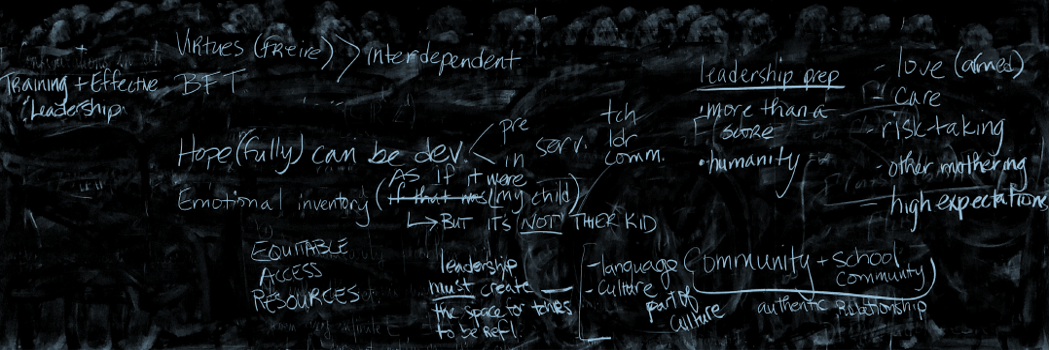This week’s readings are a reminder that transforming our current system, building a more culturally responsive one, cannot be accomplished by K-12 teachers alone. Khalifa’s article reminds us that this requires support in policies, funding, and administrators. A new teacher at BC, I’m now wondering, where is this self-examination of key characteristics, behaviors, and effectiveness is going on in our school schools of education? What do our offices, libraries, and classrooms feel like? How are we modeling this for pre-service teachers? Also, because this work requires dismantling and support from all angles, I appreciated the authors breaking down key terms in this work. Their understanding that depending on where we’re entering the conversation, we are using these terms differently. It was important to see how they conceived of culturally responsive leadership as distinct from pedagogy.
With a new sense of the unique role and responsibility that school leaders hold in this work, I turned to the NYS Culturally Responsive-Sustaining Education Framework, to see what NYC DOE principals might be turning to in this moment. Curious to see how critical self-awareness might live within this document, the closest correlation I could find was in the principle called, “Welcoming and Affirming Environment.” Of concern, while students’ responsibilities include: practicing empathy, thinking about other’s feelings, respectful engagement in difficult conversations, affirming others, collaborating with adults, advocating for diversity, and addressing bias (p. 20), school leaders are not held accountable to students in this same fashion. While I do see the value in leaders’ responsibilities which include: reviewing of policies, assessment, data, and providing and many types of structural supports for staff and families, it is important to note that “ways of being with” their students are missing. The closest to this includes: creating advisory groups that include students, highlighting “high-quality” student work, and creating “peace making circles” led by facilitators. Not only is there no expectation that school leaders engage in what Khalif calls critical self-awareness, there is no expectation they engage in the vulnerable and difficult dialogue expected of students. I now wonder if this issue has been brought up by students, parents, teachers, or principals themselves.




I really appreciated the questions you raised here, and also your close look at the actual language of NYC DOE policy around culturally sustaining pedagogy. The question of what’s happening in schools of education feels critical to me – so often what is oppressive about schools systems gets replicated and reified within teacher education and leadership education programs. And it felt very telling to me that while students are being asked to consider their ways of being and engaging with each other, teachers and leaders are not.
This also made think of the unequal power dynamics within schools between students, teachers and administrators – when conflict arises, more often than not, the adults are not required to reflect on their role in contributing to the conflict (even and especially when they are the ones causing harm or enacting oppression within the classroom). The word of the adult is taken over the word of the student. What would it look like to require that same level of vulnerability of the adults and those in power – and what would it take to shift the power dynamics so that every member of the school community were granted the same level of trust and held accountable to each other and their relationships to each other?